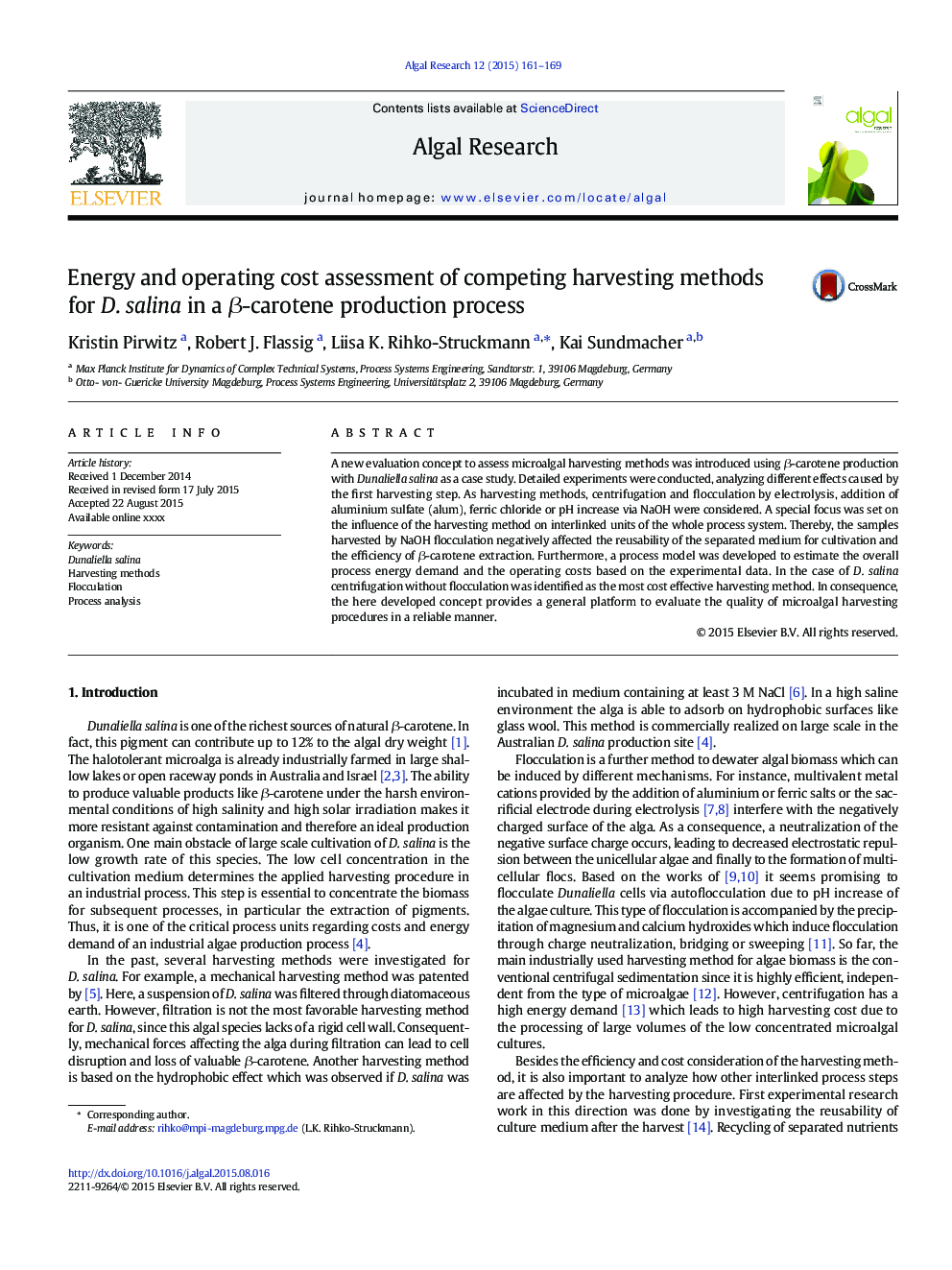| Article ID | Journal | Published Year | Pages | File Type |
|---|---|---|---|---|
| 8087806 | Algal Research | 2015 | 9 Pages |
Abstract
A new evaluation concept to assess microalgal harvesting methods was introduced using β-carotene production with Dunaliella salina as a case study. Detailed experiments were conducted, analyzing different effects caused by the first harvesting step. As harvesting methods, centrifugation and flocculation by electrolysis, addition of aluminium sulfate (alum), ferric chloride or pH increase via NaOH were considered. A special focus was set on the influence of the harvesting method on interlinked units of the whole process system. Thereby, the samples harvested by NaOH flocculation negatively affected the reusability of the separated medium for cultivation and the efficiency of β-carotene extraction. Furthermore, a process model was developed to estimate the overall process energy demand and the operating costs based on the experimental data. In the case of D. salina centrifugation without flocculation was identified as the most cost effective harvesting method. In consequence, the here developed concept provides a general platform to evaluate the quality of microalgal harvesting procedures in a reliable manner.
Related Topics
Physical Sciences and Engineering
Energy
Renewable Energy, Sustainability and the Environment
Authors
Kristin Pirwitz, Robert J. Flassig, Liisa K. Rihko-Struckmann, Kai Sundmacher,
